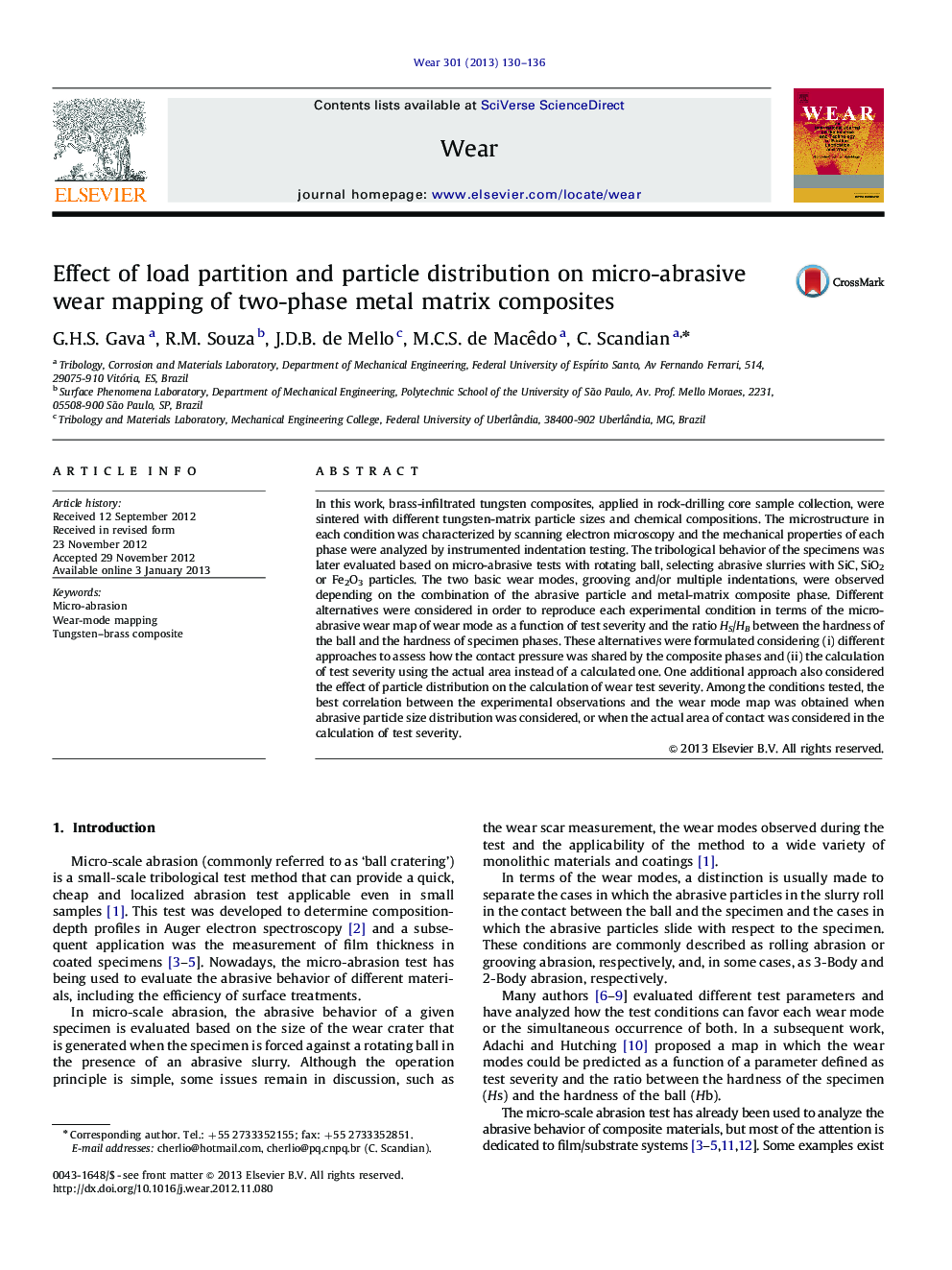| Article ID | Journal | Published Year | Pages | File Type |
|---|---|---|---|---|
| 617512 | Wear | 2013 | 7 Pages |
In this work, brass-infiltrated tungsten composites, applied in rock-drilling core sample collection, were sintered with different tungsten-matrix particle sizes and chemical compositions. The microstructure in each condition was characterized by scanning electron microscopy and the mechanical properties of each phase were analyzed by instrumented indentation testing. The tribological behavior of the specimens was later evaluated based on micro-abrasive tests with rotating ball, selecting abrasive slurries with SiC, SiO2 or Fe2O3 particles. The two basic wear modes, grooving and/or multiple indentations, were observed depending on the combination of the abrasive particle and metal-matrix composite phase. Different alternatives were considered in order to reproduce each experimental condition in terms of the micro-abrasive wear map of wear mode as a function of test severity and the ratio HS/HB between the hardness of the ball and the hardness of specimen phases. These alternatives were formulated considering (i) different approaches to assess how the contact pressure was shared by the composite phases and (ii) the calculation of test severity using the actual area instead of a calculated one. One additional approach also considered the effect of particle distribution on the calculation of wear test severity. Among the conditions tested, the best correlation between the experimental observations and the wear mode map was obtained when abrasive particle size distribution was considered, or when the actual area of contact was considered in the calculation of test severity.
